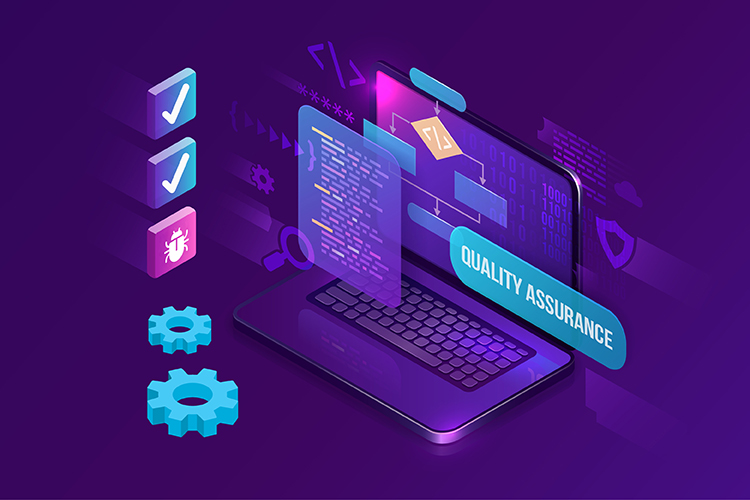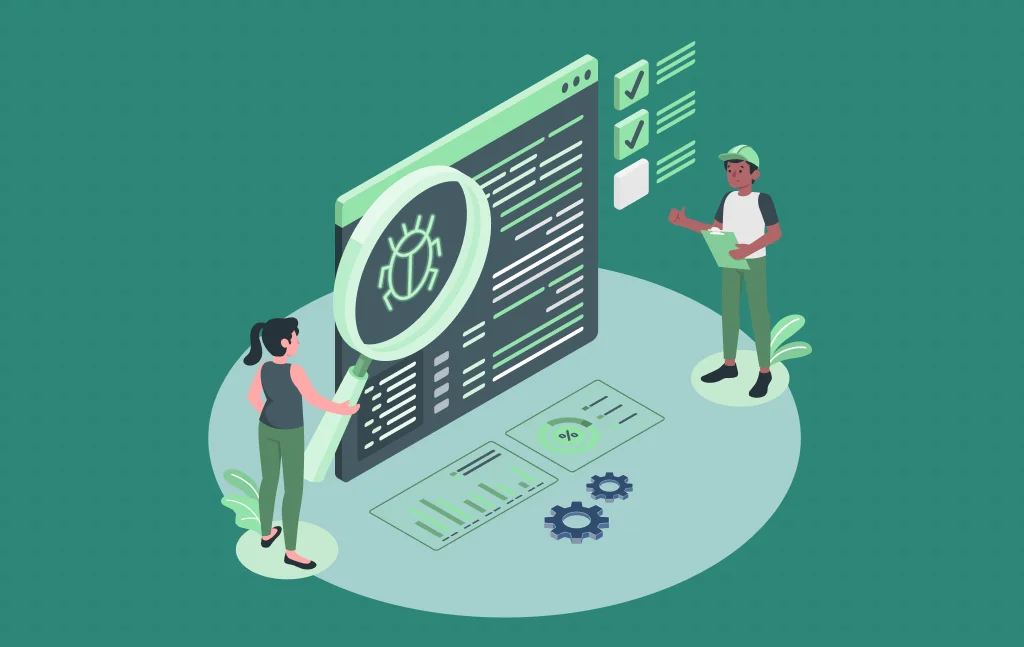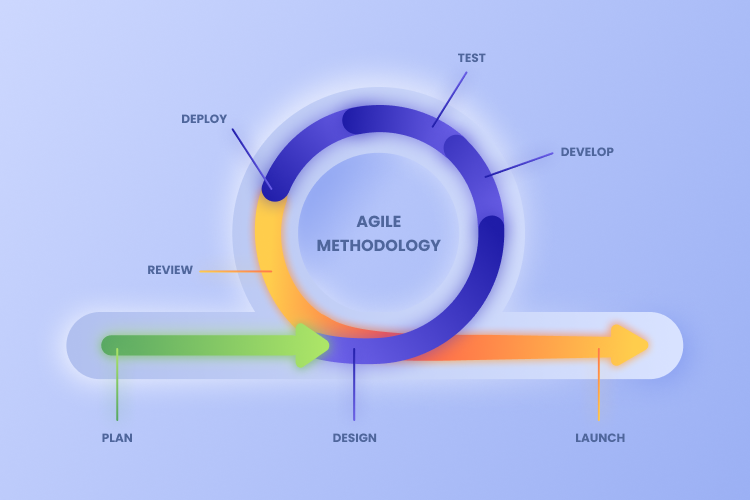How We Perform QA Testing at MindInventory
- QA
- March 12, 2021
Testing a software application and maintaining international testing standards in the Software Development Life Cycle (SDLC) process and assuring the quality of the product to the customer is one of the challenging jobs in the IT industry.
Are you really excited to know about the software testing and quality assurance (QA) process at MindInventory? In this blog, we’ll show you how the quality assurance activities are been carry forwarded in order to achieve customer satisfaction by maintaining industrial standards during web and mobile app development.
Why We Need to Instill the Testing After the Development Process of Any Product?
In real-world scenarios, the development process has got boom by growing rapidly where everyone focuses much on the development process.
When the software is been developed by the developer, they could not able to test the application with respect to the real-world scenarios. For example, a chef who cooks a dish will never find any difficulties or issues in his own dish, someone has to taste it and tell how the dish is, and no one dares to tell and accept that there are some issues within the task or work they have done.
In the same way when the software has been developed then it has to undergo a certain testing process where the developed software will be validated against the business/customer requirements.
If you are not interested to test your product, most likely your customers won’t like to test it either.
What QA Brings for Clients?
The below are the some of the benefits that Quality Analyst (QA) will bring for your products:
1. QA Saves You Money
If your product is having a fault then that product will cost you and your customers. If the bug is undetected in your software for a long period of time then it will be more difficult to manage and too expensive to fix it.
By hiring QA, You can improve the quality throughout the development process of your product and you will save time and money.
2. QA Inspires Confidence for your Application
In this competitive world, the main thing that we need to be strong enough is that how confident we are with our product before releasing it into the market. Always with corporate software, the stakes will be higher.
This is colossally important for delivering quality in software and maintaining long-term relationships. So, Here QA builds confidence for your application.
3. QA Maintains Great User Experience
Nowadays, the software that is being developed should be right from the User Experience (UX) point of view. As the user interface either make your business or break your business.
If the user experience of any software is not good then literally users will not be showing interest and get frustrated in using your software application. So, Here QA tests the software with an end-user experience.
4. QA Boosts Customer Satisfaction
If the developed product is bug-free and working fine as expected in such a way that the user really enjoys then the fame and reputation of your product will be high and customers will be satisfied and more users can be attracted. This makes good money as well. We need to give them the best satisfaction in such a way that they’ll be rewarding us with loyalty.
5. QA Promotes Organization, Productivity
Instead of waiting for the whole product to be developed, organizing the QA activities at the initial stage of software development will bring you more productivity for your software, which can be achieved within your target time.
Only bug-free software can bring good promotion to your products and good productivity of your projects.
How the Software Testing is Processed at MindInventory?
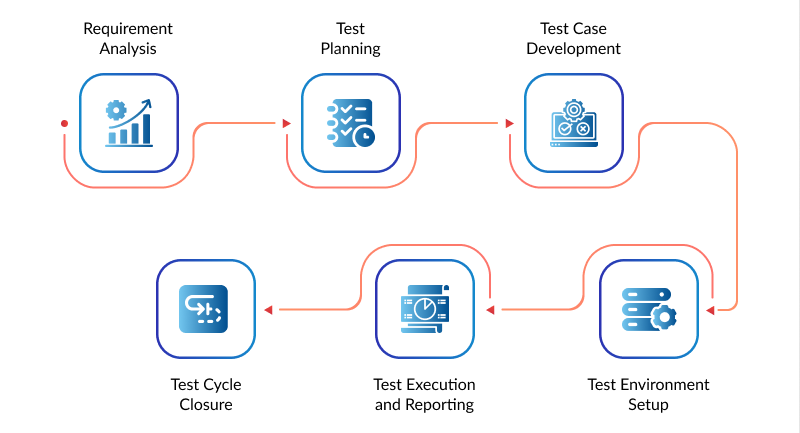
Here, In MindInventory we follow the international standard software testing process in sequential manner as mentioned below:
1. Requirement Analysis
The initial phase of every software development life cycle is that the Business Analyst will interact with the client to confirm and finalize the project requirements.
Then, later on the specification document will be prepared which includes detailed information about the tools, technologies, strategies that have to be exercised for the software development and this document will be transparent in order to perceive the project flow among the team.
Then later on the Quality Assurance (QA) lead and senior software test engineers will determine the business logic-related challenges that might emerge which benefit the workflow of the development and testing process.
We strictly followed Google’s, Apple’s developer guidelines and instructions, wireframe guidelines, user interface guidelines while developing an Application.
2. Test Planning
In this phase, the Quality Assurance (QA) lead and senior software test engineers will prepare the test plan document which includes:
- To determine the Scope and Objective of testing.
- List of features to be tested.
- List of features not to be tested.
- Type of approach to be followed while testing the software either manual or automation.
- The number of resource allocation for testing.
- Type of training if any the resources should undergo.
- Risks that might be involved during the testing process.
- A schedule of tasks and milestones to be achieved.
- Determine test deliverables.
3. Test Case Development
In this phase, the QA team will start designing the test cases (How to test) for the selected test scenarios (What to test) of the real-world scenarios for the application.
Test cases will enable the software test engineers to perform a sequence of steps to be followed to ensure that a software product is bug-free and the functionality of the software is working as expected from the end-user point of view.
4. Test Environment Setup
It is a test bed where the software and hardware environment come into picture on which the test cases will be executed by the testing team. This test includes hardware and software configuration, operating system settings, test terminals, and other supported tools (which may vary depending upon projects).
The test environment consists of real-world business and end-user environments. As this is the most crucial aspect of the testing process, we’ll make sure that the product works fine and meet the needs of end-users on all environments which have been set up.
5. Test Execution and Reporting
Test execution is the process of executing the test cases of a software product by comparing the expected results with actual results.
While running test cases quality assurance engineers will add information about each and every defect they found and they log the found defect to a defect tracking system with respect to the severity and priority. This way developer can start fixing bugs that are raised by the test engineers as early as possible.
6. Test Cycle Closure
It is the last phase of the testing process on completion of test execution which involves several activities like test completion reporting and test results. And here we evaluate the testing cycle completion criteria based on time, test coverage, budget, and quality of the software that we need to achieve.
Types of Software Testing Methods We Have Adopted at MindInventory
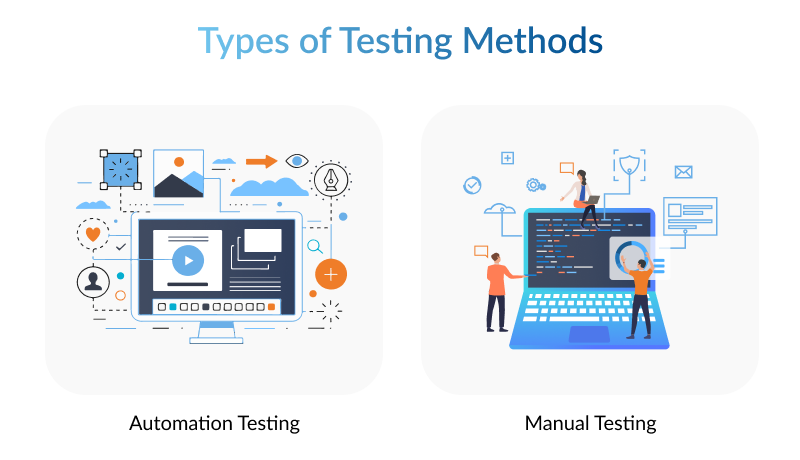
There are two types of software testing methodologies that we have adopted based on the customer requirements and project complexities as follows:
1. Manual Testing
As the term itself says that testing will be carried out manually by QA engineers as a whole process without using any automated tool.
Here the team will be testing the developed software against the business requirements and end-user perspective. For the complex projects, sometimes only manual testing is not suitable. So, we need to adopt automation testing.
2. Automation Testing
Automation testing is a type of software testing, which is mostly adopted for bigger and complex projects. Mostly we use automation testing to speed up the test, to reduce time and cost, and mostly to perform testing on repetitive tasks by performing regression testing on regular intervals of time.
In this testing process automation test engineer writes test scripts (code) for testing functionality, complex logic and a significant part of the code with respect to function.
Note: The main objective of both manual testing and automation testing is to identify the bugs in the software application and to make sure the product is bug-free.
Manual tester engineers execute the written test cases whereas automation tester engineers use a special tool and framework like Selenium, Cucumber to automate test scripts.
Types of Software Testing We Perform at MindInventory
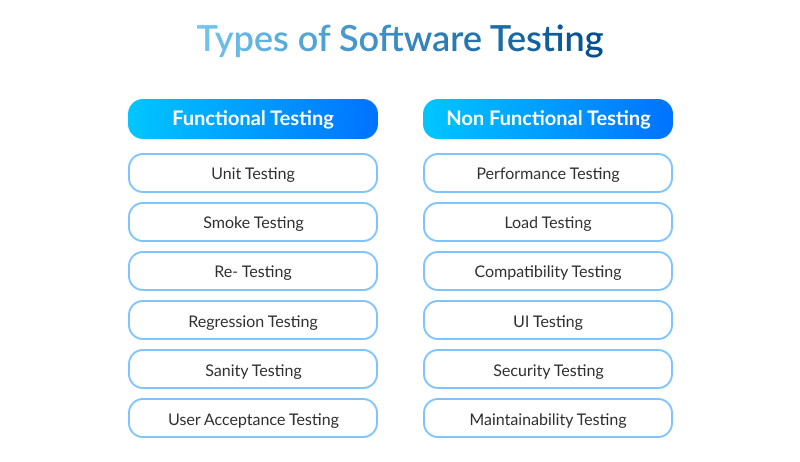
In any domain of the projects, the software testing has to mainly cover two different types as a part of core testing which are mentioned below:
Functional Testing
Functional Testing is a type of software testing process in which the main focus will be to test each and every functionality of the product and validate it. The below
are the functional testing types:
1. Smoke Testing/Build Verification Testing
Whenever the QA team will receive the build from the development team, then the QA team will perform smoke testing.
If the build passes the smoke testing then further testing can be performed. This activity (receiving build) will be continued until all bugs are fixed by the development team.
2. Re-Testing/Confirmation Testing
Whenever the developer will fix the bugs and deploy the build in the QA environment then we’ll perform retesting (testing the application in which bugs have been raised).
3. Regression Testing
We mainly perform the regression tests to make sure that new implemented functionality or features will not affect the existing functionality. This testing is mostly performed when the environment has been changed or new features have been implemented and with regular intervals of time.
4. Sanity Testing
Sanity testing is a subset of regression testing. It exercises only a particular component of the whole system. Sanity Testing is like a specialized health check-up for the software application that uncovers the major problems which saves time and cost.
5. User Acceptance Testing
User Acceptance Testing is a type of functional testing methodology where the clients/end users involved in testing the product to validate the product against their business requirements.
In this testing, we verify/accept the software system before moving the software application to the production environment. It is performed at the client location. UAT is context dependent in which plans are created based on the requirements and not mandatory to perform all the user acceptance tests.
Non – Functional Testing
It can be defined as a type of software testing to check non-functional factors of software such as (performance, usability, reliability, load, stress, etc.) of a software application.
It describes the system as a non-functional parameter that can never be addressed by functional testing. The below are the non-functional types:
1. Performance Testing
Performance Testing is one of the non-functional types of software testing used for testing the speed, response time, stability, reliability, scalability, behavior, and resource usage of a software application under a particular workload. We use the Postman tool for performing Performance testing.
2. Load Testing
Load testing is performed for modeling the expected usage that puts a demand on system software that measures its response by simulating multiple users accessing the program. The poor performance of a software application can be obtained by performing load testing.
3. Compatibility Testing
It is a type of software testing method which verifies that your developed software has the compatibility of running on different hardware, device platform versions, operating systems, network environments, etc. Most of the applications will be getting crashed due to a lack of compatibility.
4. User Interface Testing
UI Testing is also known as GUI (Graphical User Interface) Testing which validates the GUI as per the business requirement. GUI Testing mostly includes testing the size of the buttons, colors, grammatical corrections, spelling mistakes, input field present on the screen, alignment of all text, tables, and content in the tables, etc.
We have a dedicated UI/UX design team who designs the screens as per your business requirements which remains us “Good design is good Business”.
5. Security Testing
Here, Security Testing is done to check how the developed software or website is secured from internal and external threats. This testing includes how much the software is being secure from viruses, Vulnerabilities. This testing mostly involves authorization and authentication checks of an application.
6. Maintainability Testing
It is a type of testing that ensures the system’s ability to update, modify the application whenever required. This is one of the most important processes as the system is intended to have many changes through the software life cycle.
Once the developed software is deployed to the production environment, the software requires maintenance.
Apart from the above-mentioned testing types QA engineers will perform additional tests like:
- Cross Browser Testing
- API Testing
- Stress Testing
- End-To-End Testing
- Exploratory Testing
- Adhoc Testing
- Recovery Testing
- Monkey & Gorilla Testing
- Positive testing
- Negative testing
Mostly, the type of testing that we need to perform actually depends on the domain of the project, and workflow process we follow in MindInventory is one of the best practices that have we have ever improved which speeds up the testing process and maximize QA team’s efficiency.
We assure you that after our testing process, we’ll deliver a high-quality bug-free product to our clients.
Enclosing
The testing process that we have described in this post is truly based on the best practices that we have aimed in testing life cycle process of any application.
MindInventory is committed to deliver high quality bug-free products to their clients in order to achieve customer satisfaction.
